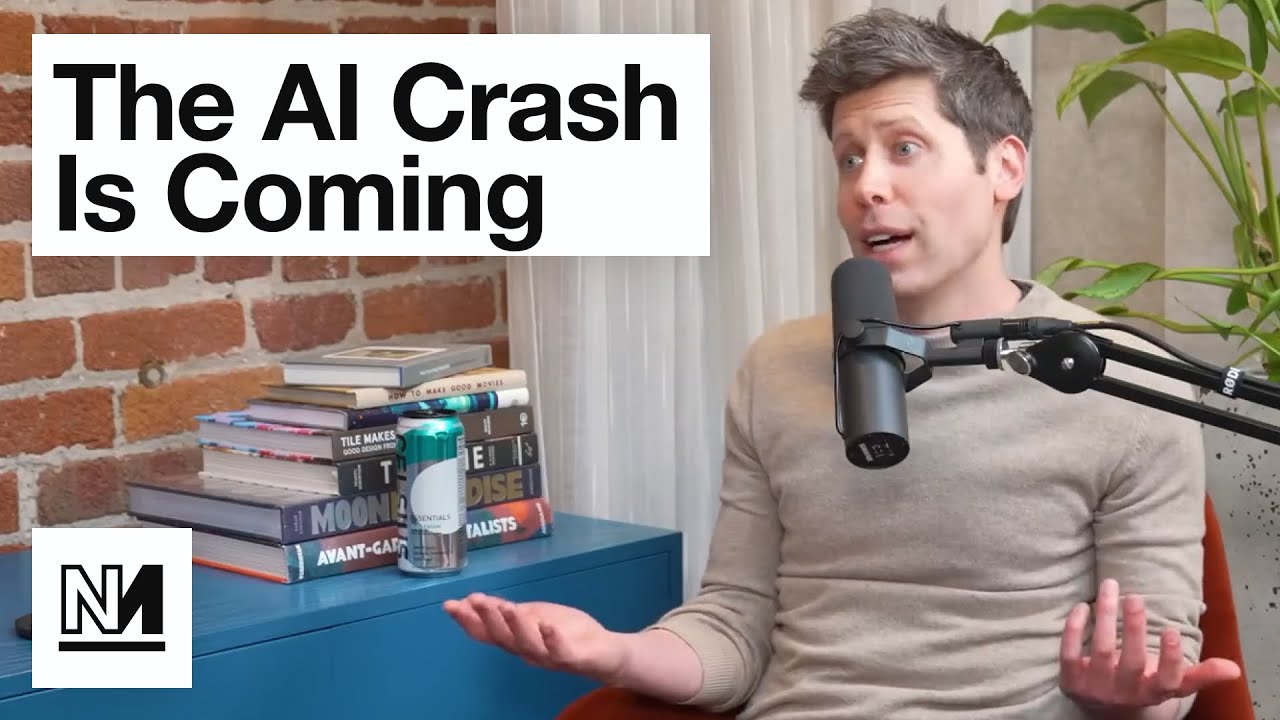The video highlights the massive surge in AI infrastructure investment in the U.S., driven by major tech companies, and acknowledges Sam Altman’s admission that the AI sector is currently experiencing a speculative bubble similar to the dot-com era, with potential for significant market corrections. Despite this, the underlying AI technology and infrastructure investments are expected to have a lasting impact on the economy and society, though concerns remain about environmental, social, and governance challenges as the industry grows.
The video discusses the current surge in capital expenditure on artificial intelligence (AI) infrastructure in the United States, which now accounts for 1.2% of the country’s GDP—a level of investment not seen since the railroad boom of the late 19th century. This massive spending is primarily driven by the four biggest tech companies: Amazon, Microsoft, Google, and Meta, who collectively invested hundreds of billions in just three months. This AI infrastructure boom is credited with helping sustain U.S. economic growth despite adverse policies like tariffs, highlighting the significant multiplier effect of such investments on employment and the broader economy.
Sam Altman, CEO of OpenAI, acknowledges that the AI sector is currently experiencing a bubble. He draws parallels to the dot-com bubble of the late 1990s, noting that while investors are overexcited and valuations may be inflated, AI remains one of the most important technological developments in recent history. Altman warns that some investors may lose substantial amounts of money as the bubble bursts, a sentiment that has already influenced market behavior, with tech stocks experiencing declines following his comments and a skeptical MIT study showing that most companies investing in generative AI have yet to see returns.
The video further explores the nature of this bubble, emphasizing that much of the venture capital inflow is speculative, driven by investors eager to back the next transformative technology. The discussion highlights how private infrastructure—platforms and services that become essential to everyday life, like Facebook or Uber Eats—drives company valuations. For AI to justify its current valuations, it must similarly become integral to economic and social infrastructure by replacing or enhancing jobs and services. If this transformation fails to materialize, many AI startups and their supporting companies, including chip manufacturers like Nvidia, could face significant losses.
Historical context is provided through a comparison with the dot-com bubble, where initial overvaluation led to a crash that wiped out many companies, yet ultimately paved the way for the internet to revolutionize society. The video suggests that even if the AI bubble bursts, the underlying technology and infrastructure investments—such as data centers—will continue to grow and shape the future. Sam Altman predicts that OpenAI alone will spend trillions on data center construction, underscoring the long-term commitment to AI development despite short-term market volatility.
Finally, the video touches on broader political and social implications, including government involvement and the potential for corporate capture. It discusses how governments may support AI development to maintain economic competitiveness and defense capabilities, sometimes influencing research priorities. There is concern about the environmental and social impact of expanding data centers, with references to speculative ideas like building data centers in space. The video concludes by highlighting tensions between market forces, government interests, and societal needs as AI infrastructure continues to expand, raising questions about sustainability and governance.
